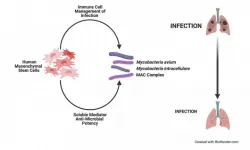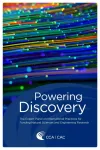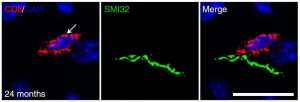(Press-News.org) Blood may seem like a simple fluid, but its chemistry is complex. When too much potassium, for instance, accumulates in the bloodstream, patients may experience deadly irregular heart rhythms.
Cardiovascular scientists at Virginia Tech's Fralin Biomedical Research Institute at VTC are studying why.
In a new study, published in Pflügers Archiv European Journal of Physiology, the research team led by Steven Poelzing, associate professor at the institute, describes how subtle changes in potassium, calcium, and sodium levels regulate heartbeats.
Poelzing says that the results could help researchers and physicians understand the nuances of cardiac arrythmias, as well as a group of genetic disorders that impact sodium channel function, such as Brugada syndrome.
The scientists elevated blood potassium in guinea pigs, creating a condition called hyperkalemia, which causes some of the heart's key electrical conduits, sodium channels, to shut down. Next, they increased calcium levels and observed the heart muscle cells pressing closer together. This miniscule motion - spanning mere nanometers - helps preserve electrical conduction in the heart.
"We know the heart is extremely sensitive to changes in blood electrolyte levels, but until recently we didn't have a great picture of how the heart's molecular landscape is remodeled, and how these muscle cells adapt," said Poelzing, who is also an associate professor in the Virginia Tech College of Engineering's department of biomedical engineering and mechanics.
Heart muscle cells primarily pass electrical signals via a network of protein bridges called gap junctions and sodium channels. These pathways let nutrients and positively charged minerals flow between cells. When there are too many positively charged potassium ions in the blood, however, the cells get overstimulated and temporarily block signaling channels.
"This can be dangerous when sodium channels get stuck in a half-closed state. The cell isn't dying, but it's not as electrically active as it once was. This can cause dangerous heart arrythmias and sudden cardiac death," Poelzing said.
When the heart's core electrical pathways falter, heart muscle cells press closer together, allowing them to sense subtle electric fields generated by neighboring cells. This secondary form of cell-to-cell signaling is known as ephaptic coupling.
"Ephaptic coupling appears to address the effects of a functional loss of sodium channels, in this case caused by high potassium, and helps keep the current flowing properly across the heart muscle," Poelzing said.
Over the course of the eight-year study, Poelzing's team tested different concentrations of sodium and calcium to treat the electrical defects associated with high potassium to see how the heart would respond. They discovered that increasing sodium and calcium levels together greatly reduced the distances between cells, providing a substantial improvement in cardiac conduction.
In the clinic, human patients with hyperkalemia who develop abnormal heart rhythms are administered intravenous calcium gluconate. Poelzing's findings help explain why elevating calcium levels under these certain clinical conditions is beneficial.
"What surprised me is that such small changes in electrolyte values have such dramatic effects," said Ryan King, the study's first author and a postdoctoral research associate in the lab of Scott Johnstone, an assistant professor at the Fralin Biomedical Research Institute. "The ranges of sodium, calcium, and potassium we used in this study are not exaggerated, extreme ionic conditions that you'd never find in a clinical setting. They're all within ranges that could show up in metabolic blood panels."
INFORMATION:
King worked in Poelzing's lab for more than four years while completing his Translational Biology, Medicine, and Health (TBMH) doctoral degree at Virginia Tech.
Alexandra Hanlon, director of the Virginia Tech Center for Biostatistics and Health Data Science (CBHDS) and professor of practice in statistics, and Ian Crandell, CBHDS research scientist, oversaw the study's statistical strategy.
The study's other contributing authors included Michael Entz II, an engineer at Cook Medical who was a graduate student mentored by Poelzing during the study; Grace Blair, a TBMH graduate student; and Gregory Hoeker, a research assistant professor in Poelzing's lab.
The research was funded by National Institutes of Health grants awarded to King, and Poelzing. The work done by CBHDS for this research was supported by the NIH's National Center for Advancing Translational Sciences Clinical and Translational Science Award (CTSA) to the integrated Translational Health Research Institute of Virginia (iTHRIV). iTHRIV represents a partnership between Virginia Tech, the University of Virginia, Carilion Clinic, and Inova Health.
DALLAS (May 3, 2021) - Researchers from the Center for BrainHealth® at The University of Texas at Dallas are investigating a potential new early indicator of the decline toward Alzheimer's disease: measuring the energy metabolism of the living human brain using cutting-edge imaging techniques.
The scientists devised a unique way to illustrate energy consumption and reserves in the brain with phosphorus magnetic resonance spectroscopy using an ultra-high-field 7 Tesla MRI scanner. Their results suggest that neurological energy metabolism might be compromised in mild cognitive impairment (MCI), the stage of decline between healthy ...
A study published today in Nature Communications shows that the drug rucaparib has been effective in treating certain types of ovarian cancers if used early in treatment, after a diagnosis, and before the cancer cells build up a resistance to chemotherapy.
Rucaparib is in a relatively new class of drugs - Poly(ADP-ribose) polymerase or PARP inhibitors - which have been approved for therapy in ovarian cancers. This study provides insights into both how the cancers resist treatments, and which patients may respond favorably to the drug, said lead author Dr. Elizabeth Swisher, a UW Medicine ...
Durham, NC - A study released today in STEM CELLS Translational Medicine offers hope for those suffering from a chronic, difficult to treat condition called non-tuberculous mycobacteria (NTM) lung infection. The study describes how researchers at Case Western University developed a new model of NTM lung infection and then used it to show how effective human mesenchymal stem cells (hMSCs) are in treating this condition - and even which donor cells might be best for doing so.
"The potential to use human mesenchymal stem cells to treat difficult lung infections is promising," said Anthony Atala, M.D., Editor-in-Chief of STEM ...
PULLMAN, Wash. -- Professor Arda Gozen looks to a future someday in which doctors can hit a button to print out a scaffold on their 3-D printers and create custom-made replacement skin, cartilage, or other tissue for their patients.
Gozen, George and Joan Berry associate professor in the Washington State University School of Mechanical and Materials Engineering, and a team of researchers have developed a unique scaffolding material for engineered tissues that can be fine-tuned for the tricky business of growing natural tissue. They report on their research in the journal, Bioprinting. The team also includes researchers from WSU's ...
Dating violence - physical, sexual, psychological or emotional within a relationship, including stalking - is pervasive on college campuses with far-reaching health implications. One in five women experience a sexual assault in college and students living in sorority houses are three times more likely to experience rape. College students are vulnerable to dating violence because of the influence of their social and living environments.
Researchers from Florida Atlantic University's College of Education in collaboration with Sacred Heart University conducted a study to understand the dating violence experience and perpetration of college-age women, ...
Astronomers have identified more than 4,000, and counting, confirmed exoplanets -- planets orbiting stars other than the sun -- but only a fraction have the potential to sustain life.
Now, new research from UBC's Okanagan campus is using the geology of early planet formation to help identify those that may be capable of supporting life.
"The discovery of any planet is pretty exciting, but almost everyone wants to know if there are smaller Earth-like planets with iron cores," says Dr. Brendan Dyck, assistant professor of geology in the Irving K. Barber Faculty of Science and lead author on the study.
"We typically hope to find these planets in the so-called 'goldilocks' or habitable ...
Researchers at the University of North Carolina at Chapel Hill and Duke University improved HIV care by gamifying it with a mobile gaming application.
Gaming features - like those used to drive airline loyalty and track daily steps --- helped young men living with HIV achieve viral suppression and doubled their chances for reaching near perfect adherence to medication plans, according to a study in AIDS and Behavior.
Gamification can inspire changes in behavior when a doctor's advice or a patient's good intentions are not enough. In this case, motivating those living with HIV to stick to ...
Research funding agencies around the world are testing creative approaches to address urgent needs while laying the foundation for discoveries that will meet the unpredictable demands of the future. According to a new expert panel report from the Council of Canadian Academies (CCA), Canada can bolster its research capacity by reducing administrative burdens, experimenting with funding approaches, and cultivating a robust, resilient, and diverse scientific workforce.
"In the past year we have seen the power and promise of transformative research and the ability of researchers and funding organizations to pivot in times of crisis," said Shirley M. Tilghman, PhD, O.C., FRS, Chair of the Expert Panel. "But the pandemic has also exacerbated existing inequalities ...
Almost half of the parents who have children together with a parent with schizophrenia or bipolar disorder, are themselves burdened by psychological issues. This can affect family life and the children. This is shown in the research result from the major Danish psychiatry project iPSYCH.
We typically choose a partner who resembles us in relation to social status, education and, to some extent, also income. Research has previously established this. A new study now shows that almost half of the parents who have children with a partner who suffers from schizophrenia or bipolar disorder themselves meet the criteria for a mental disorder. By comparison, this is 18 percent for parents in the control group.
The results stem from The Danish High-Risk and Resilience ...
Aging is the biggest risk factor for perturbation of the nervous system, even in the absence of distinct disease or trauma. For yet unknown reasons, the impulse conducting, myelinated projections and synaptic connections between nerve cells are especially vulnerable to aging-related degeneration. These pathological alterations often manifest as cognitive, sensory, and motor decline in older adults and represent a serious socio-economic challenge.
Malactivation leads to damage
Scientists have long assumed that inflammation plays an important role in this process. Mal- or overactivation of distinct cells belonging to the innate immune system - the microglia - appears to promote damage of nerve fibers and synapses ...







